6.5 Creedmoor vs 270 Win. Which Cartridge Is a Better Choice?
With only a minuscule difference of 0.013 inches in bullet diameter, the 6.5 Creedmoor and the .270 Winchester engage in a notable Caliber Battle. These two cartridges are extensively utilized by hunters across the United States, from Alaska to Alabama. They exhibit comparable bullet weight and velocity performance and are compatible with various rifle models.
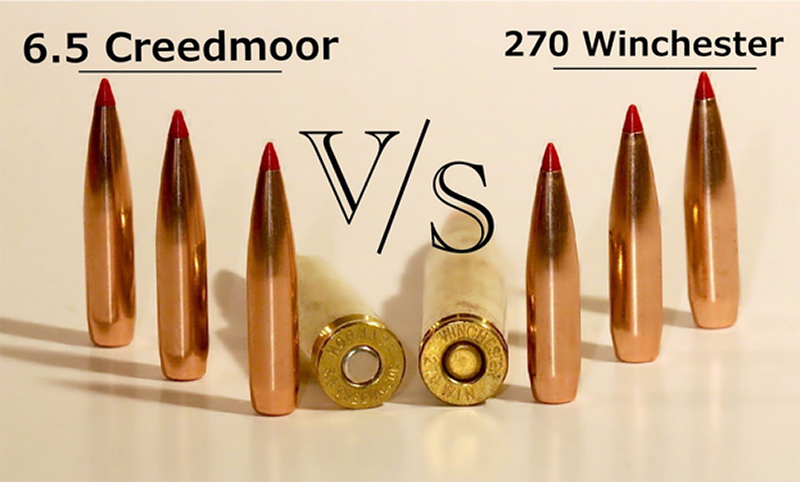
Interestingly, when you conduct a Google search for "6.5 Creedmoor vs," the top auto-fill suggestion is "270." This indicates the keen interest among hunters to compare these highly popular cartridges, and we aim to provide a definitive answer to that ongoing debate.
Our previous topic compared the popular 6.5 Creedmoor VS .308 Winchester and found out which was better suited for different purposes. In this article, we'll delve into the details of the 6.5 Creedmoor and the .270, comparing their ballistics, performance, suitability for different shooting applications, and more. By the end, you'll better understand which cartridge best suits your specific shooting requirements.
Let's start with caliber's Pros And Cons.
6.5 Creedmoor
Pros
 Excellent Accuracy potential.
Excellent Accuracy potential. Tons of rifle and ammo options
Tons of rifle and ammo options A serious target Round
A serious target Round
Cons
 Shorter maximum point-blank range
Shorter maximum point-blank range
270 Winchester
Pros
 Widely available rifles and ammo
Widely available rifles and ammo Less felt recoil
Less felt recoil Lengthy track record of success
Lengthy track record of success
Cons
 Lower energy at long range
Lower energy at long range
6.5 Creedmoor vs 270: Size Comparison
When comparing the physical dimensions of the 6.5 Creedmoor and the .270 cartridges, there are notable differences in size that can impact their compatibility with firearms and reloading components.
The 6.5 Creedmoor has an overall length of approximately 2.825 inches (71.76mm), while the .270 measures around 3.34 inches (84.84mm) in overall length. This indicates that the .270 is slightly longer than the 6.5 Creedmoor.
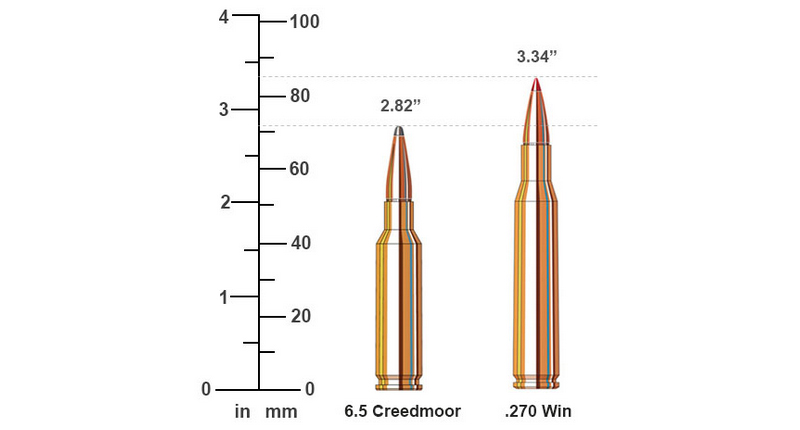
The 6.5 Creedmoor has a case length of approximately 1.92 inches (48.77mm), while the .270 features a longer case length of about 2.54 inches (64.52mm). The longer case of the .270 provides more room for powder, potentially resulting in higher velocities and increased energy.
When it comes to a bullet diameter, the 6.5 Creedmoor has a bullet diameter of 0.264 inches (6.71mm), while the .270 features a slightly larger bullet diameter of 0.277 inches (7.04mm). The larger bullet diameter of the .270 can impact bullet selection and performance, especially considering factors such as bullet weight and sectional density.
In the following chart, you can visually compare the dimensions of the 6.5 Creedmoor and the .270:
| Cartridge | 6.5 Creedmoor | .270 |
| Overall Length (inches) | 2.825 | 3.34 |
| Case Length (inches) | 1.92 | 2.54 |
| Bullet Diameter (inches) | 0.264 | 0.277 |
6.5 Creedmoor vs 270: Ballistics
Let's delve into the ballistics of the .270 Winchester and the 6.5 Creedmoor, two cartridges often pitted against each other.
The .270 Winchester is renowned for its flat trajectory and long-range capabilities. It typically fires bullets ranging from 130 to 150 grains at velocities of around 3,000 feet per second (fps). This combination allows for excellent energy retention and terminal performance, making it a favored choice for big game hunting.
| 6.5 Creedmoor | .270 Winchester | |
| Bullet Velocity (Muzzle) | 2,700 ft/s | 3,050 ft/s |
| Bullet Velocity @ 100 yds | 2,556 ft/s | 2,842 ft/s |
| Bullet Velocity @ 200 yds | 2,417 ft/s | 2,643 ft/s |
| Bullet Velocity @ 300 yds | 2,282 ft/s | 2,453 ft/s |
| Bullet Velocity @ 400 yds | 2,151 ft/s | 2,270 ft/s |
| Bullet Velocity @ 500 yds | 2,025 ft/s | 2,096 ft/s |
| Bullet Energy (Muzzle) | 2,315 ft-lb | 2,685 ft-lb |
| Bullet Energy @ 100 yds | 2,075 ft-lb | 2,331 ft-lb |
| Bullet Energy @ 200 yds | 1,855 ft-lb | 2,016 ft-lb |
| Bullet Energy @ 300 yds | 1,654 ft-lb | 1,737 ft-lb |
| Bullet Energy @ 400 yds | 1,470 ft-lb | 1,488 ft-lb |
| Bullet Energy @ 500 yds | 1,302 ft-lb | 1,268 ft-lb |
| Usage @ 0 yds | Toughest Game | Toughest Game |
| Usage @ 100 yds | Toughest Game | Toughest Game |
| Usage @ 200 yds | Large Game | Toughest Game |
| Usage @ 300 yds | Large Game | Large Game |
| Usage @ 400 yds | Large Game | Large Game |
| Usage @ 500 yds | Medium Game | Medium Game |
| Recoil Energy | 9.1 | 17.1 (140 gr) |
| Recoil Velocity | 8.2 | 11.7 |
| Recoil Score* | 2.23 | 3.10 |
On the other hand, the 6.5 Creedmoor has gained immense popularity for its impressive long-range accuracy and mild recoil. It commonly utilizes bullets ranging from 120 to 147 grains, achieving velocities between 2,700 and 2,900 fps. This cartridge's aerodynamic projectiles and efficient ballistic performance make it highly effective for precision shooting and hunting applications.
When comparing the two, the .270 Winchester typically has a slight edge in terms of velocity and energy, particularly with heavier bullets. However, the 6.5 Creedmoor makes up for this with its excellent sectional density and ballistic coefficients, providing superior wind resistance and trajectory stability.
Ultimately, the choice between the .270 Winchester and the 6.5 Creedmoor for ballistics largely depends on personal preferences, shooting conditions, and intended applications.
6.5 Creedmoor vs 270: Recoil
The 6.5 Creedmoor typically generates less recoil compared to the .270. This is primarily due to the 6.5 Creedmoor's lower powder charge and lighter bullet weights. The moderate recoil of the 6.5 Creedmoor makes it more comfortable to shoot, particularly for shooters who are sensitive to recoil or engage in extended shooting sessions.
On the other hand, the .270 produces slightly more recoil due to its larger case capacity and heavier bullet options. However, the .270's recoil is still manageable for many shooters and is often considered mild to moderate. It's worth noting that individual shooter preferences and factors like rifle weight, stock design, and recoil pads can also influence perceived recoil.
6.5 Creedmoor vs 270: Shootability
Shootability encompasses various aspects, including ergonomics, rifle balance, muzzle rise, and ease of follow-up shots. The 6.5 Creedmoor and the .270 offer good shootability characteristics, but some differences exist.
Both the 6.5 Creedmoor and the .270 Winchester are widely available and offer affordability. Neither of them can be classified as hard-hitting cartridges. However, if you prioritize a favorable ratio of bullet velocity to recoil, the 6.5 Creedmoor stands out. It is a more efficient cartridge, utilizing 20% to 40% less powder while only experiencing a 10% to 15% reduction in velocity compared to the .270 Winchester. This efficiency translates into lower felt recoil.
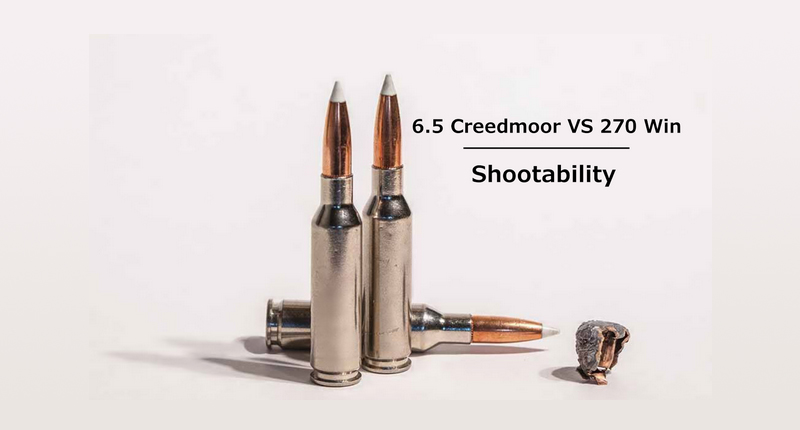
Although the .270 Winchester may have a slight advantage in a race out to 500 yards, it generally results in more perceived recoil due to its lower efficiency. The 6.5 Creedmoor, on the other hand, tends to exhibit noticeably less recoil. Recoil energy is typically reported to be around 13 ft-lbs for the 6.5 Creedmoor and approximately 17 ft-lbs for the .270 Winchester. While neither cartridge is known to be excessively punishing, based on personal experience, the 6.5 Creedmoor offers a discernibly more manageable recoil.
Considering their availability, affordability, and recoil characteristics, the 6.5 Creedmoor emerges as a favorable choice for shooters seeking a cartridge with a balanced bullet velocity-to-recoil ratio.
6.5 Creedmoor vs 270: Versatility
Both the 6.5 Creedmoor and the .270 cartridges offer versatility in various shooting scenarios. The 6.5 Creedmoor excels in long-range precision shooting and is effective for hunting smaller to medium-sized game due to its exceptional accuracy and reduced wind drift. It is popular in long-range competitions and provides an enjoyable shooting experience with its mild recoil.
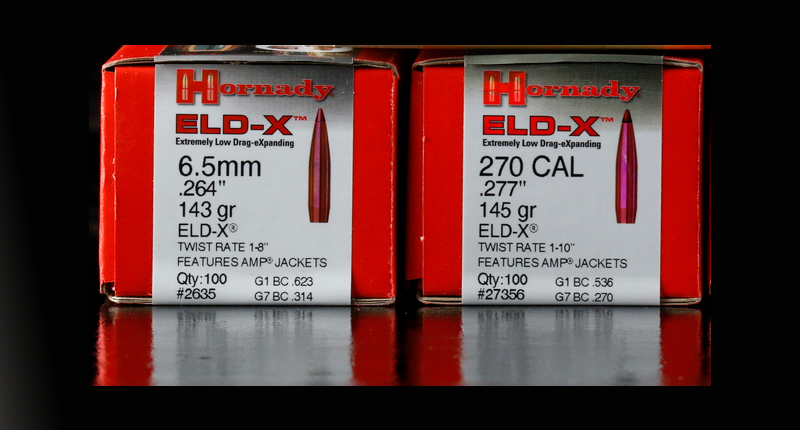
On the other hand, the .270 is versatile for medium to large game hunting, such as deer, elk, and moose, thanks to its flatter trajectory and larger bullet options. While not typically associated with target shooting, the .270 can still be used effectively for shorter-range target practice and recreational shooting. Ultimately, the choice between the 6.5 Creedmoor and the .270 depends on the specific shooting applications and game species being pursued.
6.5 Creedmoor vs 270: Hunting Applications
The 6.5 Creedmoor and the .270 are popular hunting game species. Let's explore their suitability for different hunting scenarios:
The 6.5 Creedmoor, known for its outstanding accuracy and long-range capabilities, is highly effective for precision hunting, especially for smaller to medium-sized game such as deer and antelope.
The .270, with its flatter trajectory and larger bullet options, excels in medium to large game hunting, including deer, elk, and moose.
6.5 Creedmoor vs 270: Rifle Type
The 6.5 Creedmoor is commonly found in bolt-action and semi-automatic rifles, focusing on precision shooting and long-range applications. It is also available in specialized precision and long-range rifles.
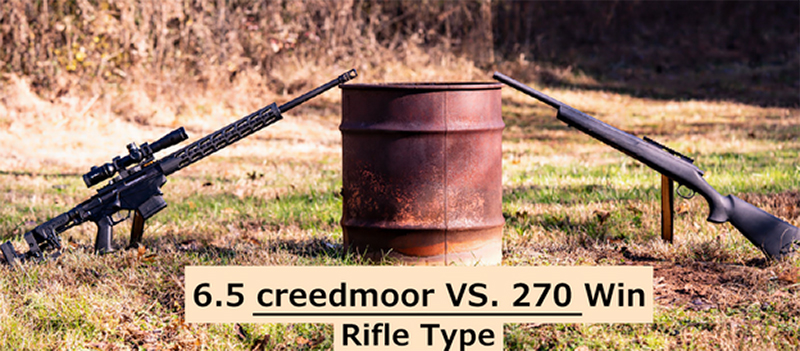
On the other hand, the .270 cartridge is typically chambered in bolt-action rifles, lever-action rifles, and occasionally semi-automatic rifles. These rifles are popular for medium to large game hunting.
6.5 Creedmoor vs 270: Ammunition Availability and Cost
The availability and affordability of ammunition are crucial considerations for any shooter. Here's how the 6.5 Creedmoor and the .270 compare in this aspect:
The 6.5 Creedmoor has gained significant popularity in recent years, resulting in various ammunition options from various manufacturers. It is generally available at a reasonable price point.
The .270 has been a longstanding favorite among hunters and shooters, ensuring a vast range of ammunition choices at affordable prices.
Both the 6.5 Creedmoor and the .270 are exceptional rifle cartridges with their own strengths and applications. The 6.5 Creedmoor excels in long-range precision shooting, while the .270 offers a flatter trajectory and versatility for medium to large game hunting. Ultimately, your choice should depend on your specific shooting needs and preferences. Consider factors such as ballistics, recoil, hunting requirements, and ammunition availability to make an informed decision. Whichever cartridge you choose, both the 6.5 Creedmoor and the .270 will provide a thrilling shooting experience.

